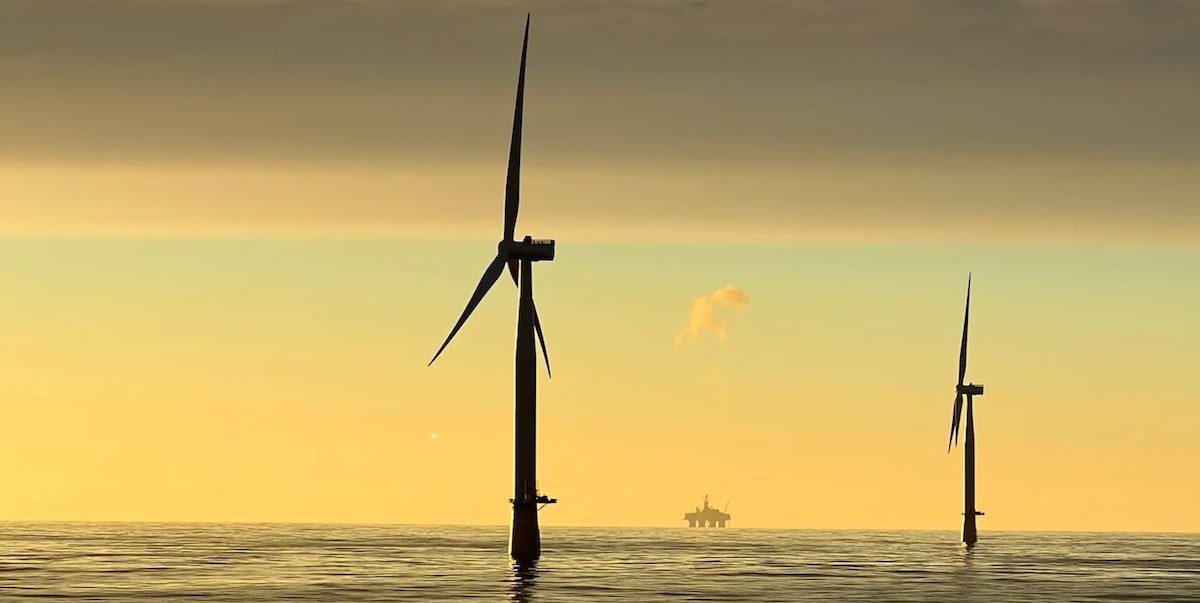AGL, Australia’s largest coal generator and biggest polluter, has joined the rush to grab a share of the nascent offshore wind sector by joining a powerful new consortium that includes some deep-pocketed global investors.
The consortium – comprising Ireland’s Mainstream Renewable Power, Canada’s Reventus Power, and Australia’s Direct Infrastructure – says it seeking to build a 2.5GW offshore wind project in Gippsland, the first offshore wind zone to be developed in Australia.
The consortium is one of possibly two dozen or more that are seeking a feasibility licence from the federal government. Only a few are expected to be granted at the end of this year.
The AGL consortium says its project could deliver an economic benefit of more than $3.7 billion and create more than 8,600 full time jobs. Its proposal includes a $400 million package to support workforce and supply chain development, an increasingly critical pinch point for the Australian renewables industry.
AGL’s interest is particularly interesting given it owns one of the three remaining brown coal generators in Victoria – in the nearby Latrobe Valley – that the state government wants shut down by 2035 to meet its 95 per cent renewables target, and its legislated climate goals.
AGL recently closed the ageing and decrepit Liddell coal generator in NSW, and is likely to close the neighbouring Bayswater coal plant in a decade’s time, if not earlier, as the switch to green energy gathers pace, driven by technology change, climate targets and activist shareholders such as Mike Cannon-Brookes.
“AGL’s strategy to bring forward our targeted exit from coal to 2035 is coupled with an ambition to supply our customers with 12 GW of additional renewable and firming capacity,” AGL chief financial office Gary Brown said in a statement.
“Wind energy will be an important part of our plan to responsibly transition our generation portfolio to meet our customer demand and keep Australia’s electricity supply secure, reliable, and affordable.
“As a major employer in the Gippsland region, we are committed to working with our people and the community to ensure the decarbonisation of our energy system continues to provide opportunities.”
There are now more than 20 big groups bidding for the rights to conduct the first feasibility studies for offshore wind in Gippsland, Victoria, the first officially declared zone in Australia.
Other major Australian utilities have already declared their interest in offshore wind, and Gippsland in particular, including Origin Energy and Alinta.
Macquarie’s Corio has also staked out at least two potential offshore wind projects, while global giants such as Orted, Equinor, Shell, Vena Energy and others have also joined the queue.
Just this week oil and gas company Beach Energy teamed up with a Belgian company Parkland, now owned by Japanese coal and gas giant Jera, to enter the bidding.
The irish based Mainstream Renewables entered the Australian market in 2019 and says it has 1.5GW of onshore wind projects in Queensland that are being prepared for planning approvals. Its global portfolio stands at 20GW, including offshore wind projects in Asia.
Tove Røskaft, Head of Offshore Wind at Mainstream, said:
“Mainstream has a strong history in offshore wind as one of the earliest developers globally,” said Tove Røskaft, the company’s head of offshore wind.
“Our 20-year plus legacy goes back to developing the very first offshore wind farms in Ireland and the UK, including the Hornsea zone which is the world’s largest offshore wind farm in operation today.
“Mainstream was part of the partnership behind the UK’s biggest offshore wind supply chain success story and by leveraging the global experience of our parent company, the Aker group, we seek to bring similar benefits to the local supply chain in Australia.”
Reventus Power was founded by the Canada Pension Plan Investment Board to lead its opportunities associated in the global energy transition, with a focus on offshore energy.
Direct Infrastructure is a “specialist” offshore wind company chaired by former Woodside boss Peter Coleman,
“We are pleased to be part of one of the strongest partnerships in Australia’s emerging offshore wind industry,” Coleman said.
“The energy transition in Australia is going to require large-scale offshore wind generation, and we look forward to supporting the Commonwealth and Victorian governments with their offshore wind energy ambitions.”










